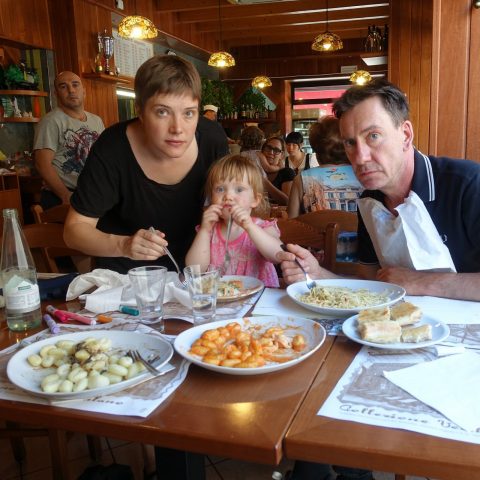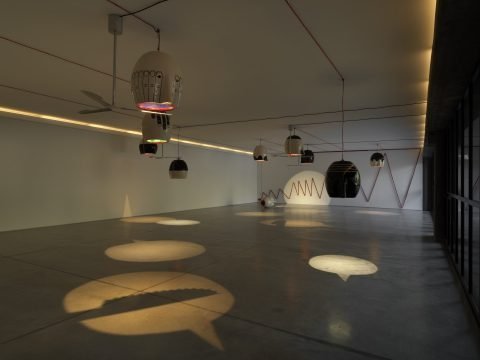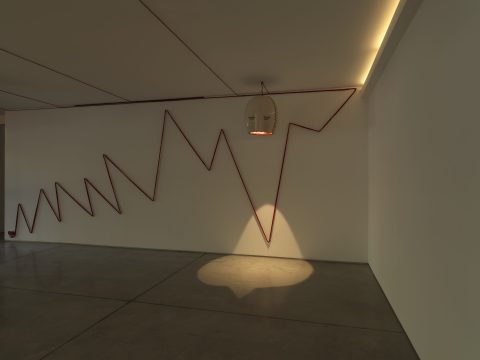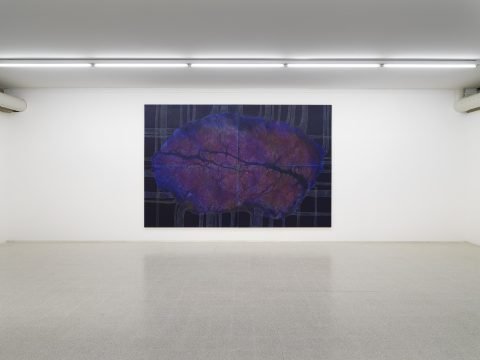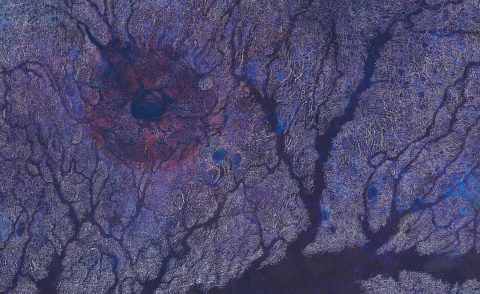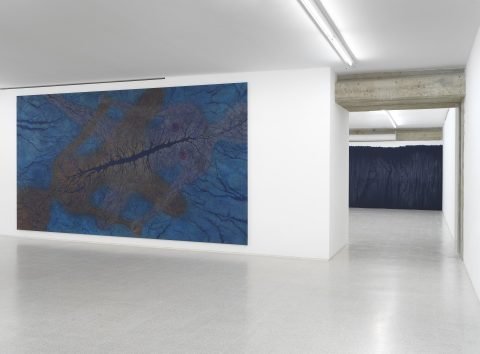Who is shaping the future of women artists?
Collezione Maramotti announces Max Mara Prize for Art Women’s short list and inaugurates two exhibitions that will lead you to the core of contemporary female art.
- Emma Hart, Restaurant, Milan, 2016. Ph. Emma Hart. Courtesy of the Artist.
- Emma Hart, Mamma Mia!, 2017. Exhibition view at Collezione Maramotti © Emma Hart. Ph. Dario Lasagni.
- Emma Hart, Mamma Mia!, 2017. Exhibition view at Collezione Maramotti © Emma Hart. Ph. Dario Lasagni.
- Luisa Rabbia, NorthEastSouthWest, 2014; colored pencils, acrylic, paper mounted on linen, 244 x 376 cm © Luisa Rabbia.Ph. Dario Lasagni.
- Luisa Rabbia, Love, 2016; colored pencils, acrylic, fingerprint on canvas, 274 x 513 cm, detail. Courtesy and © Luisa Rabbia. Ph. Dario Lasagni.
- Luisa Rabbia, Love, Exhibition view at Collezione Maramotti, 2017. Ph. Dario Lasagni.
Reggio Emilia, Italy. Yesterday morning at Collezione Maramotti’s head quarter Iwona Blazwick, the mighty Whitechapel Gallery director, announced the shortlisted artists for the seventh edition of the Max Mara Art Prize for Women. They are Helen Cammock, Céline Condorelli, Eloise Hawser, Athena Papadopoulos, Lis Rhodes and Mandy El-Sayegh. The jury which selected the artists – and that will pick the lucky winner early next year – includes Blazwick himself, artist Laure Prouvost (who won the prize in 2011), art critic Rachel Spence, curator Marcelle Joseph and art dealer Vanessa Carlos.
As Mr Luigi Maramotti personally explained while introducing the new edition of the prize, each member of the jury has been asked to propose five candidates, in order to provide a variety of positions and a wide range of possibilities to chose from. “The prize is intended to discourage discriminations against women artists and overcome hidden barriers that are still limiting their creativity” he said; and reminded the audience that 75% of his family company’s employers are women. Then he thanked them and left the microphone to Blazwick, who introduced the six candidates by mentioning the seminal exhibition dedicated this year by the MoMA in New York to women artists and post war abstraction. “It’s a significant sign that the times are changing” she claimed.
The Max Mara Art Prize, actually the only art prize dedicated to women artists in the UK and the main one in Europe, aims to promote women’s creativity by giving them space and time. Key element of the prize is in fact a six-month-tailor-made residency in Italy. Profiled by the artist herself, the residency is intended for the artist to prepare the artistic project that she will exhibit the year after at the Whitechapel Gallery and at the Collezione Maramotti. The two new exhibitions inaugurated on Saturday night at Collezione Maramotti exemplify the ‘editorial’ lines inspiring the Max Mara Art Prize and clarify the partnership between Max Mara, Collezione Maramotti and the Whitechapel Gallery.
Titled ‘Mamma mia!’, the first exhibition we are talking about is by Emma Hart, who won Max Mara Art Prize for Women two years ago and spent her residency between Milan and Faenza. During her six months staying in Italy she studied family psychology and ceramics. A first version of the show has been exhibited at the Whitechapel gallery early this year. But according to those who have seen it this second episode is somehow more intense; probably because it conveys the environment where the artworks have been conceived – drinking a glass of Chianti in Tuscany is different from drinking the same wine in Helsinki, isn’t it?
The body of ceramic heads that Emma has produced in Reggio Emilia effectively represents all the mental struggles that any family has to face everyday to turn down the negative forces against it. The delicate images decorating the inside of the heads may address complex topics such as selfishness, individualism, or lack of empathy; but also refers to those details of the human body which better embody the intimate everyday life of a family – fingers, breasts, nails, hands. In regard with the style, the figurative parts are based on repetition and may recall the decorative patterns used by ceramists in Faenza, especially by master Saura Vignoli at Bottega Vignoli. As Emma instagrammed the day after the show from her personal profile, ‘I had the time of my life’. Pictures of her, her husband and their daughter are illustrating the exhibition catalog. They are traces of the same ordinary life that her art project tries to sublimate.
Titled ‘Love’, the second exhibition is presenting a body of ten new works by New York-based artist Luisa Rabbia. The show also reflects on the relationships between human beings, but on a broader scale, and from a different point of view. In fact, while Emma is bringing on the scene her own experience of being a mother, wife, and artist, Luisa looks at human beings as a whole and addresses physics instead of psychology. Her blue and pink new painting’s texture directly recalls the three dimensional map of the universe released in 2005 by the scientists of the Max Planck Institute. The fundamental map is generally known as Millenium Run, or Millenium Run Simulation. Super strings and M Theory would be the next step. Still, the formal similarity between the cosmic texture drawn by Luisa and that generated by the Millenium Run is to be regarded as superficial layer of a more complex inquiry that seems to involve also the so called ‘entanglement‘ theory. Science is proving that there is no difference between the material world and the immaterial one. Everything is connected, and humans are just part of the same fabric of which the entire universe is made of. Two electrons generated by a single one are spinning at the same time and in the same direction even if placed at a huge distance one from the other. Like Luisa and Emma, or like a museum in London and a distinguished art collection in Reggio Emilia.
October 16, 2017

